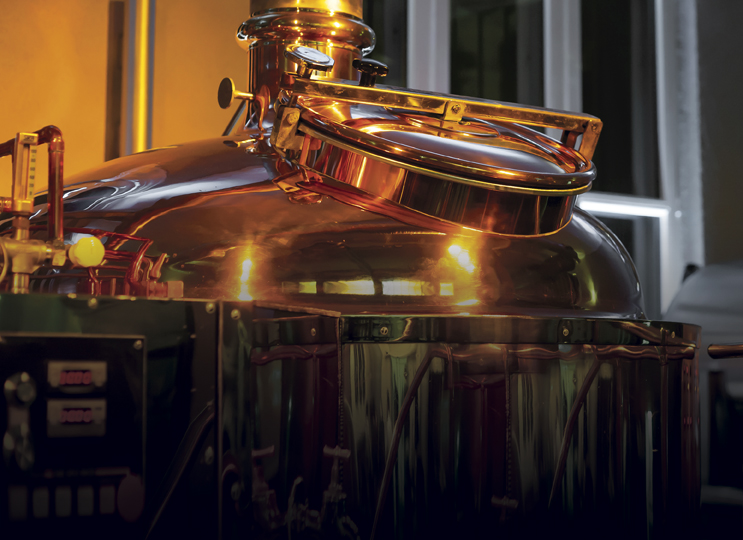Restaurants face tough competition, but carriers are eager to insure them
Conditions are not so hospitable for sectors of the hospitality industry these days.
Some commentators are calling current conditions the “restaurant recession,” although that may overstate matters, as overall volume appears flat, not in steep decline. There are signs of a significant decline in lunchtime patronage, however; a function, perhaps, of the growing number of people working from home at least part of each week.
There were about 624,000 restaurants in the United States in the spring of 2016, according to research firm NPD Group, down from a peak of more than 637,000 in 2014. The decline has come in independent, full-service sit-down restaurants, as the number of chain locations and fast-service outlets has grown slightly.
With contraction or slow growth in the market for basic meals, restaurants and bars must innovate to attract clientele and stay relevant in a market where being “trendy” is an imperative for survival.
The resulting experimentation in menus and client experiences further complicates the already challenging task of insuring operations with a high rate of failure plus complex and potentially severe risk exposures.
“For restaurants, increased competition, a competitive labor environment, rising food costs, and evolving consumer preferences have had a tightening impact on profit,” says Brian White, technical underwriting director for Nationwide’s businessowners policies. “For insurance carriers,” he adds, “lower sales and payrolls place downward pressure on premiums. As establishments evolve with their product and services offering, such as extended hours, food delivery, and alcoholic menu items, so do the risks facing each business.”
“The restaurant recession appears to be highly variable by region,” says Tony March, commercial product development manager for Farmers Insurance. “Where it has hit the hardest has been strongly influenced by lackluster consumer demand coupled with growing labor and regulatory costs.
“Over the past year, independent full-service restaurants seem to have suffered the most,” he adds. “That sector does not appear to be growing in terms of unit counts and may actually be shrinking a bit.”
Perhaps as a function of industry consolidation, March says average annual sales per location appear to be growing, especially among chains and franchised restaurants that specialize in “quick service” and “fast casual” operations.
Similar conditions are evident in the bar and nightclub business. Business in that sector has grown 1% annually on average since 2012, according to the January 2017 Bars & Nightclubs Market Research Report by IBISWorld. There are today over 68,000 such establishments.
If anyone needed a reminder of the tremendous risks inherent in bar ownership, it came in April 2015 when a Florida court awarded $60 million to a woman who was severely and permanently injured in an auto accident involving alcohol.
Significantly, the company that owned the restaurant was found negligent for serving her alcohol (she was underage at the time), even though her drinking did not cause the accident. She was a passenger in a car driven by another patron, who was not as seriously injured, but she prevailed in court on the grounds that her drinking that night impeded her judgment about riding in the car.
Brew pubs stand out as an exception to the generally sluggish growth in eating and drinking establishments. Although still small in number compared to their traditional counterparts, establishments that serve alcohol they brew, distill, or ferment on their own have grown substantially over the past decade.
According to the Brewers Association, the number of breweries in the United States more than doubled between 2012 and 2016, from 2,475 to 5,301, with most of the increase attributed to a rapidly expanding number of microbreweries. Over the same period, the number of brew pubs increased from 1,180 to 1,916.
Margins and markets
Restaurants and bars typically operate on small margins amid intense competition, with significant exposures for fire, employee injury, general liability (both premises and products), liquor liability, and employment practices liability.
A substantial number of establishments have exposures for auto liability (for deliveries) and garage-keepers liability (for valet parking), services that can be essential to success.
Those looking to capitalize on the growth of brew pubs to compensate for reduced opportunities among other establishments need to be prepared to provide products liability coverage for beverages developed and distributed by the insured, sometimes on an almost experimental basis.
Also, while brew pubs are generally designed to attract a discerning clientele that is unlikely to binge and become intoxicated, patrons often sample brews they are unfamiliar with, some with high alcohol content. The potential exists for a high-severity alcohol-related injury, even if no one needs to be “cut off.”
Competition among carriers for restaurant and bar business is intense. “We continue to see carriers targeting restaurants, which in turn is driving a competitive market,” says March. “As for businesses selling alcohol for consumption on premises, the more bar-like the risk, the more likely it is that general and liquor liability coverage are placed with an E&S carrier that offers scaled-back coverage.”
“Lower-hazard restaurants without bar or pub exposures are generally earning more competitive pricing,” says White.
To that mix of traditional exposures, we can add the one that keeps popping up everywhere: cyber liability.
In today’s networked world, it’s not only the value of one’s data that makes one a target for hackers, but also the link one offers to bigger targets, such as one’s bank. Fast-moving food establishments accept almost every form of in-person payment, often without checking identification or even requiring a signature.
“A growing share of restaurant operations are investing in advanced technology that lets them accept mobile payments and online ordering,” says March. “We see rapidly growing awareness of risks related to cyber crime.”
Although that exposure is relatively new, the response from insurers builds on past performance. “For the most part, it is business as usual with coverages and pricing,” says March. “We continue to see demand for product options and price points that can be tailored to meet the unique needs of operators whether big or small.”
At Nationwide, White says: “We provide a variety of solutions in both standard and E&S markets for our members in the food service industry. We strive to understand the unique risks and challenges for each individual operation and deliver coverage to protect each member.”
For more information:
Farmers Insurance
www.farmers.com
Nationwide
www.nationwide.com
The author
Joseph S. Harrington, CPCU, is an independent business writer specializing in property and casualty insurance coverages and operations. For 21 years, Joe was the communications director for the American Association of Insurance Services (AAIS), a P-C advisory organization. Prior to that, Joe worked in journalism and as a reporter and editor in financial services.






